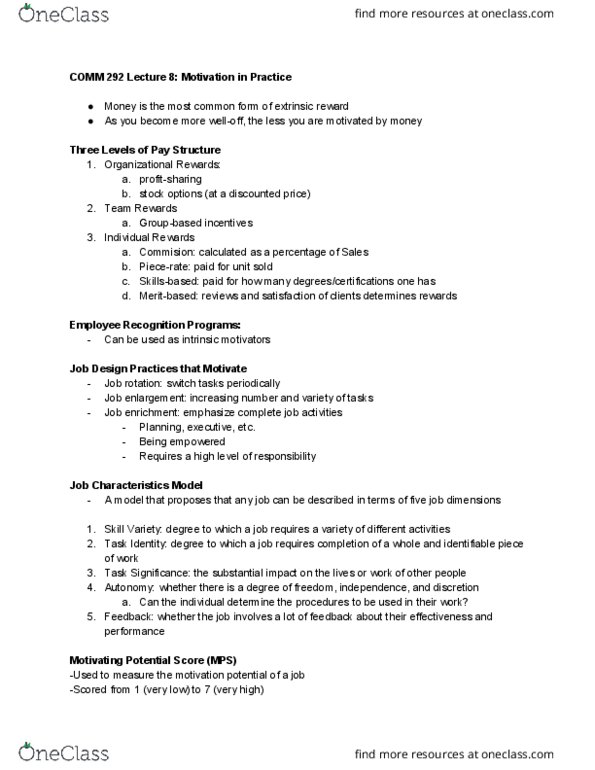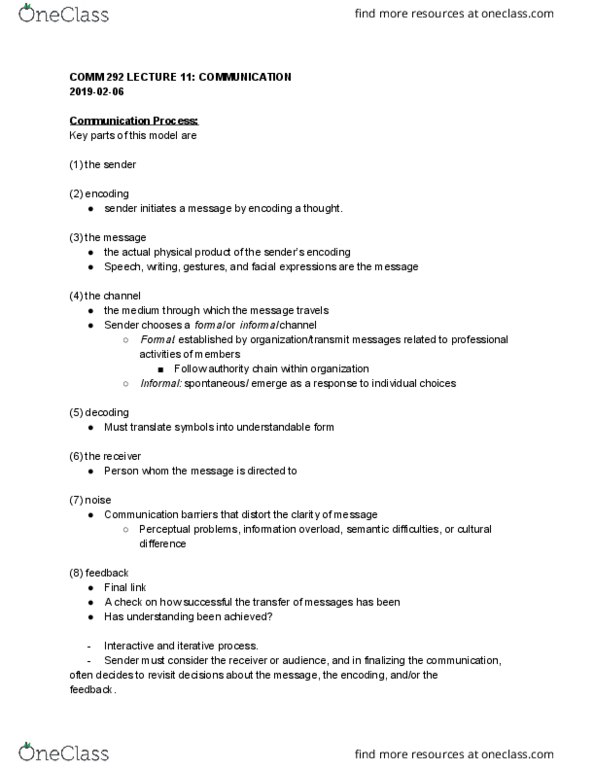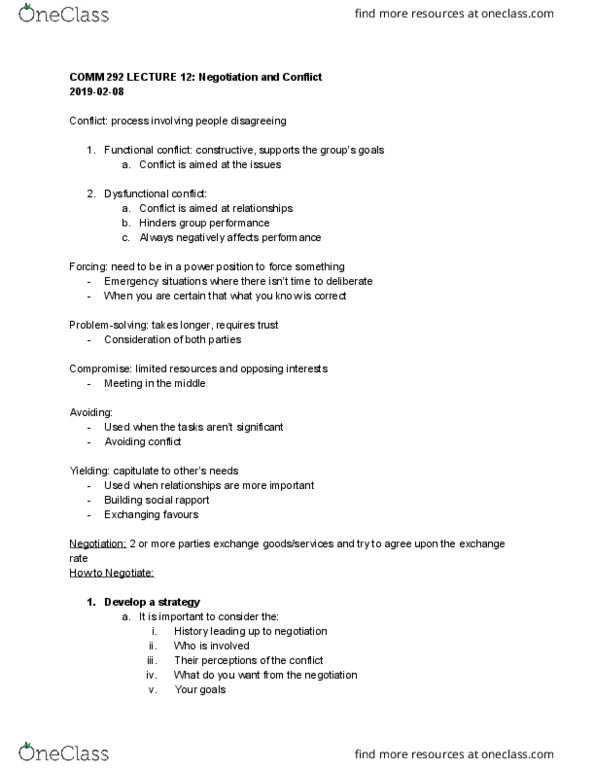COMM 292 Lecture Notes - Lecture 11: Proxemics, Paralanguage, Kinesics
COMM 292 verified notes
11/12View all
Document Summary
Key parts of this model are (1) the sender (2) encoding. Sender initiates a message by encoding a thought. (3) the message. The actual physical product of the sender"s encoding. Speech, writing, gestures, and facial expressions are the message (4) the channel. The medium through which the message travels. Sender chooses a formal or informal channel. Formal : established by organization/transmit messages related to professional activities of members. Informal: spontaneous/ emerge as a response to individual choices (5) decoding. Must translate symbols into understandable form (6) the receiver. Person whom the message is directed to (7) noise. Communication barriers that distort the clarity of message. Perceptual problems, information overload, semantic difficulties, or cultural difference (8) feedback. A check on how successful the transfer of messages has been. Sender must consider the receiver or audience, and in finalizing the communication, often decides to revisit decisions about the message, the encoding, and/or the feedback.




